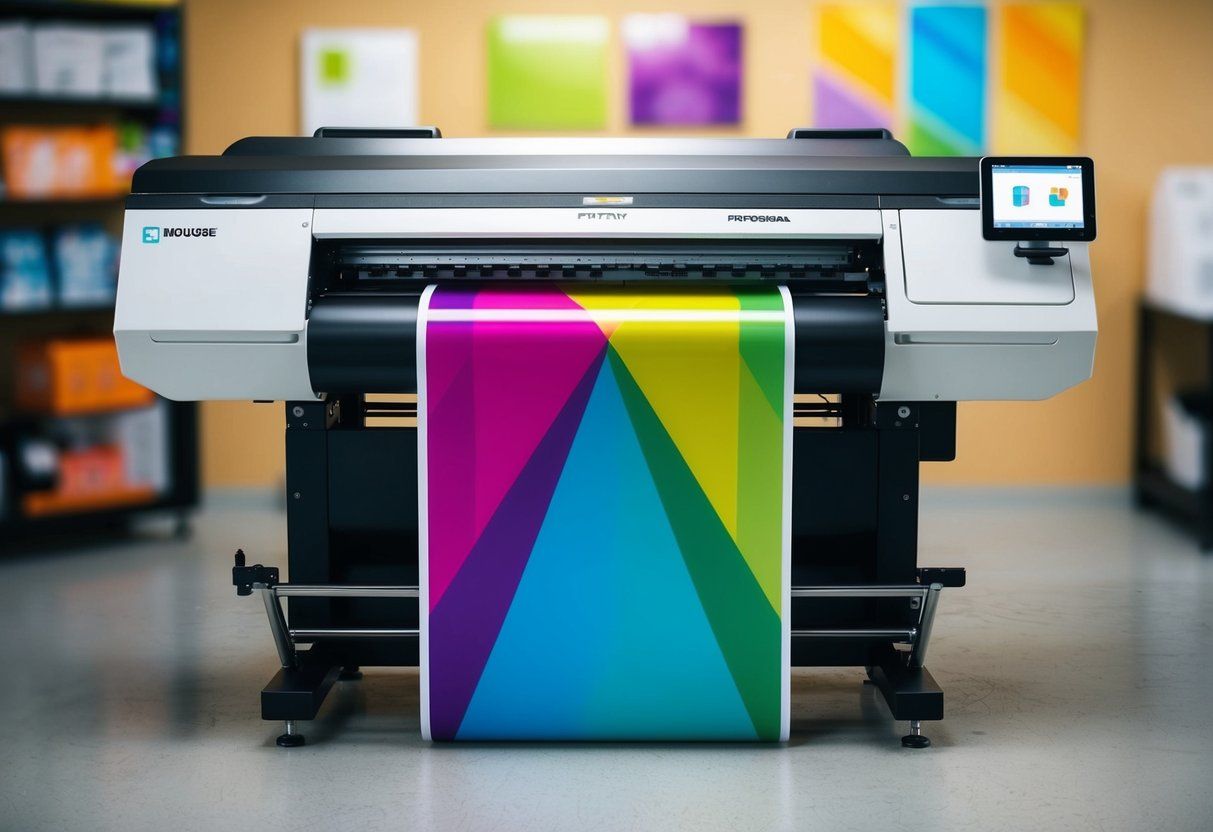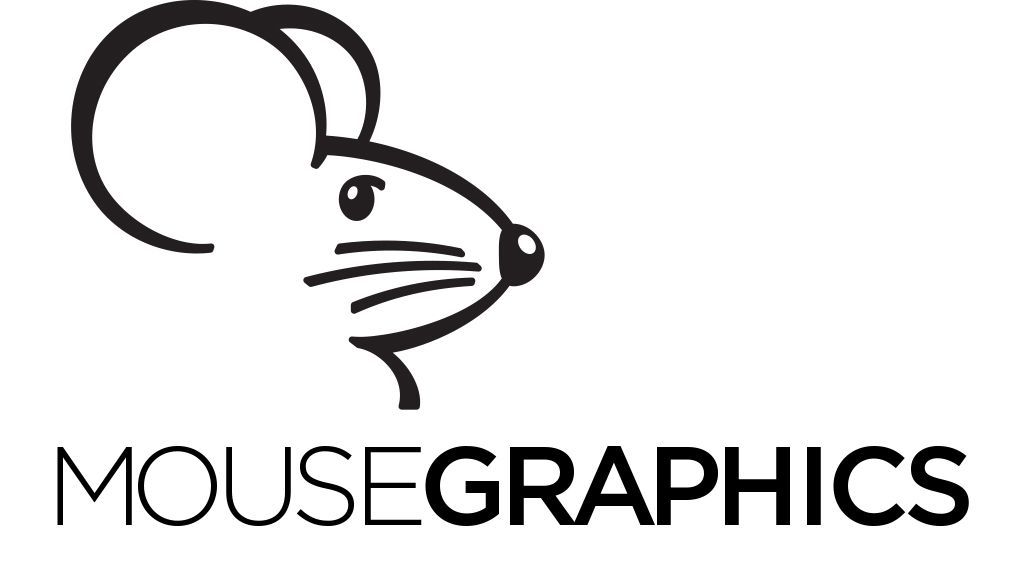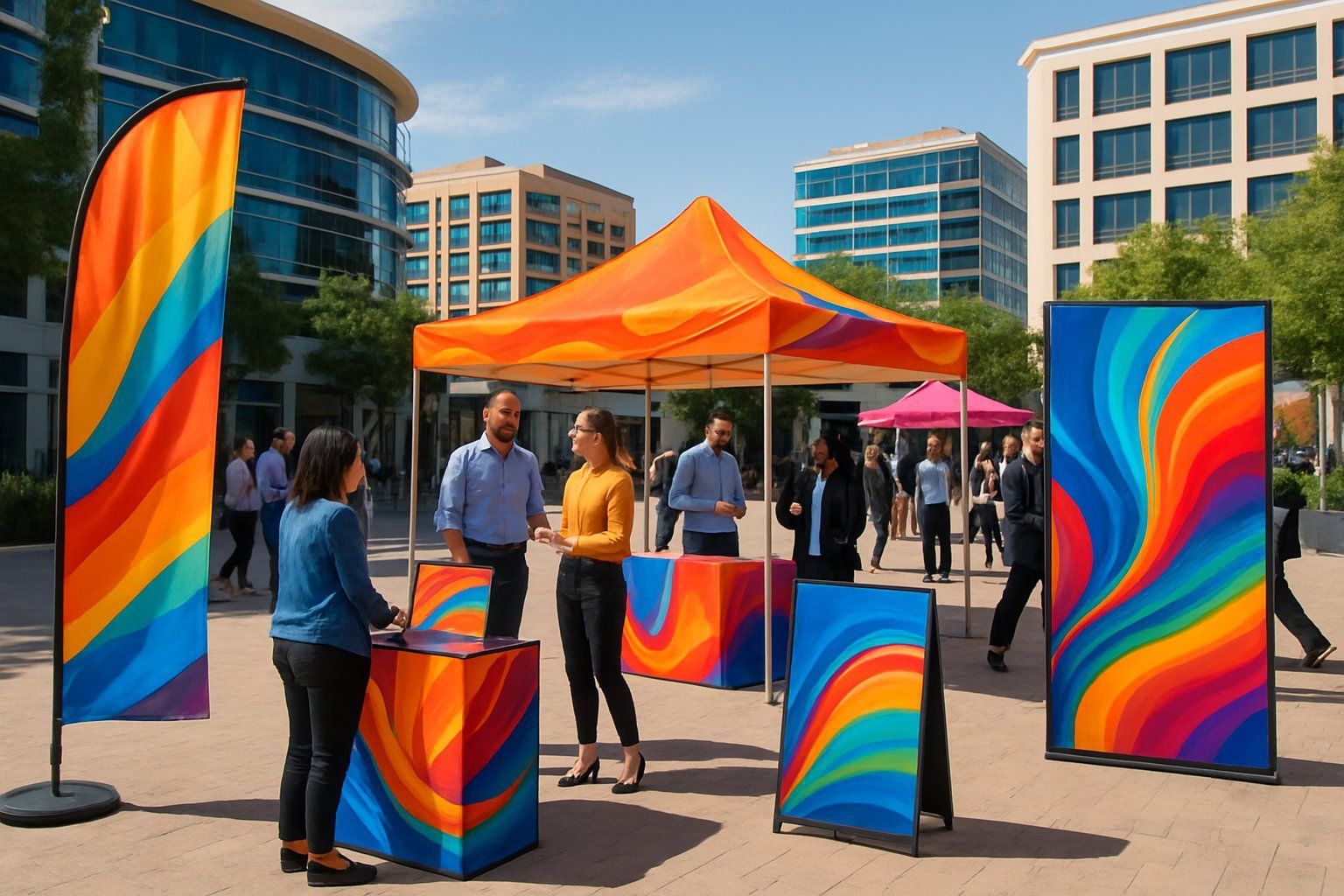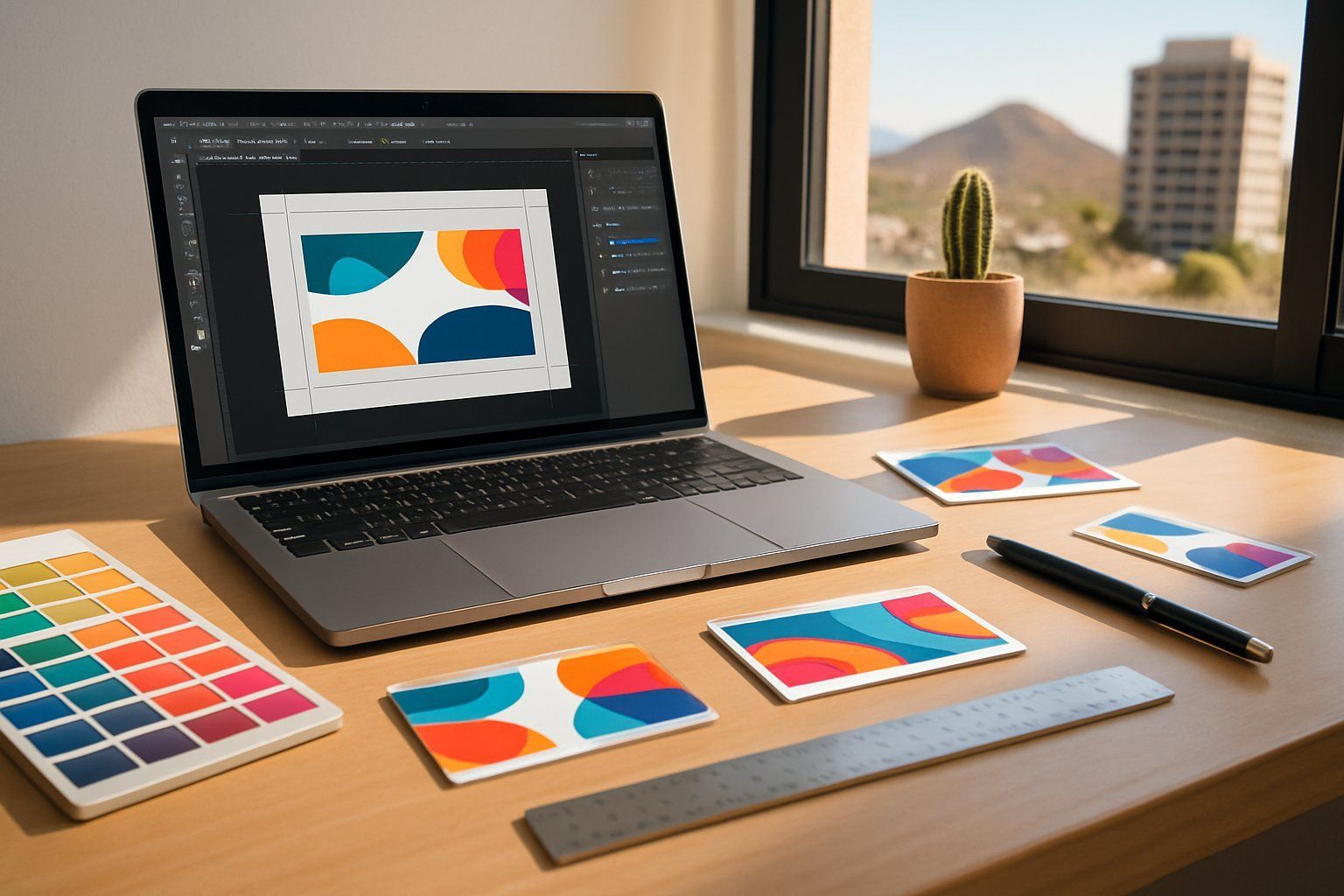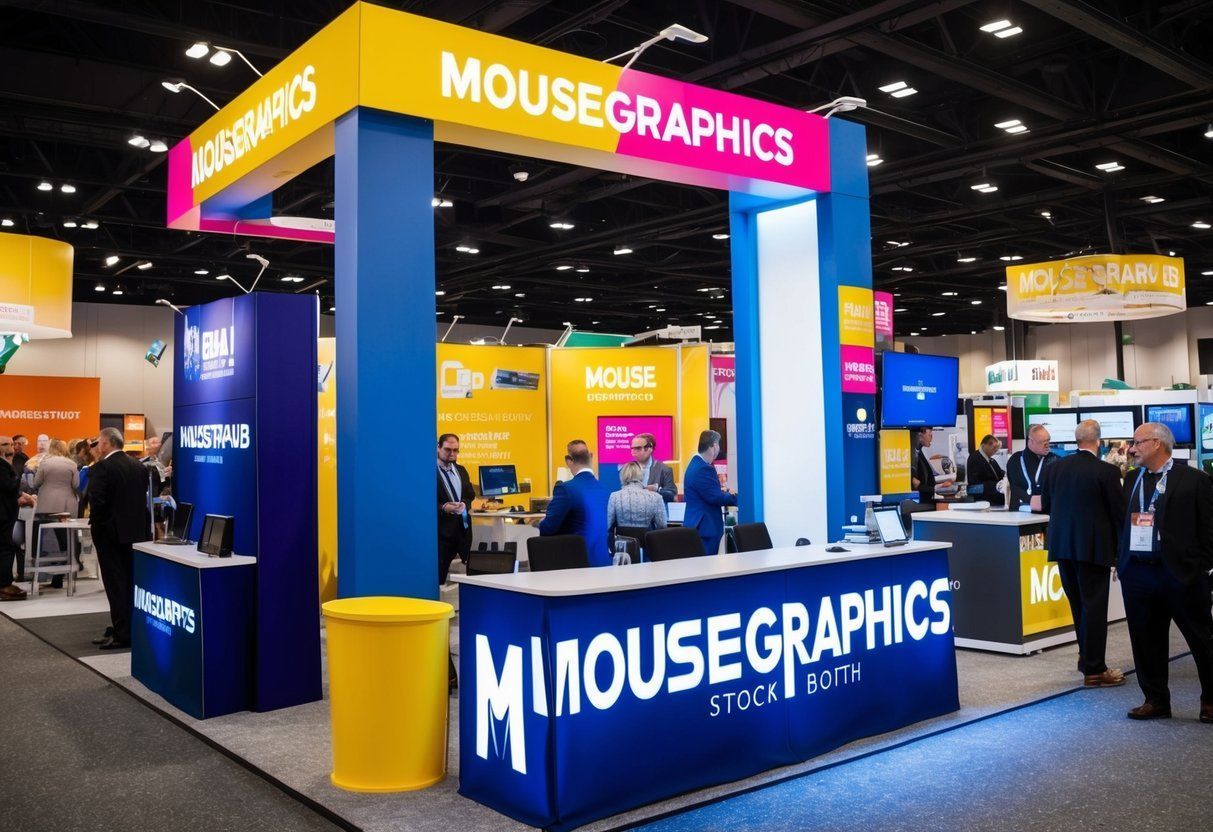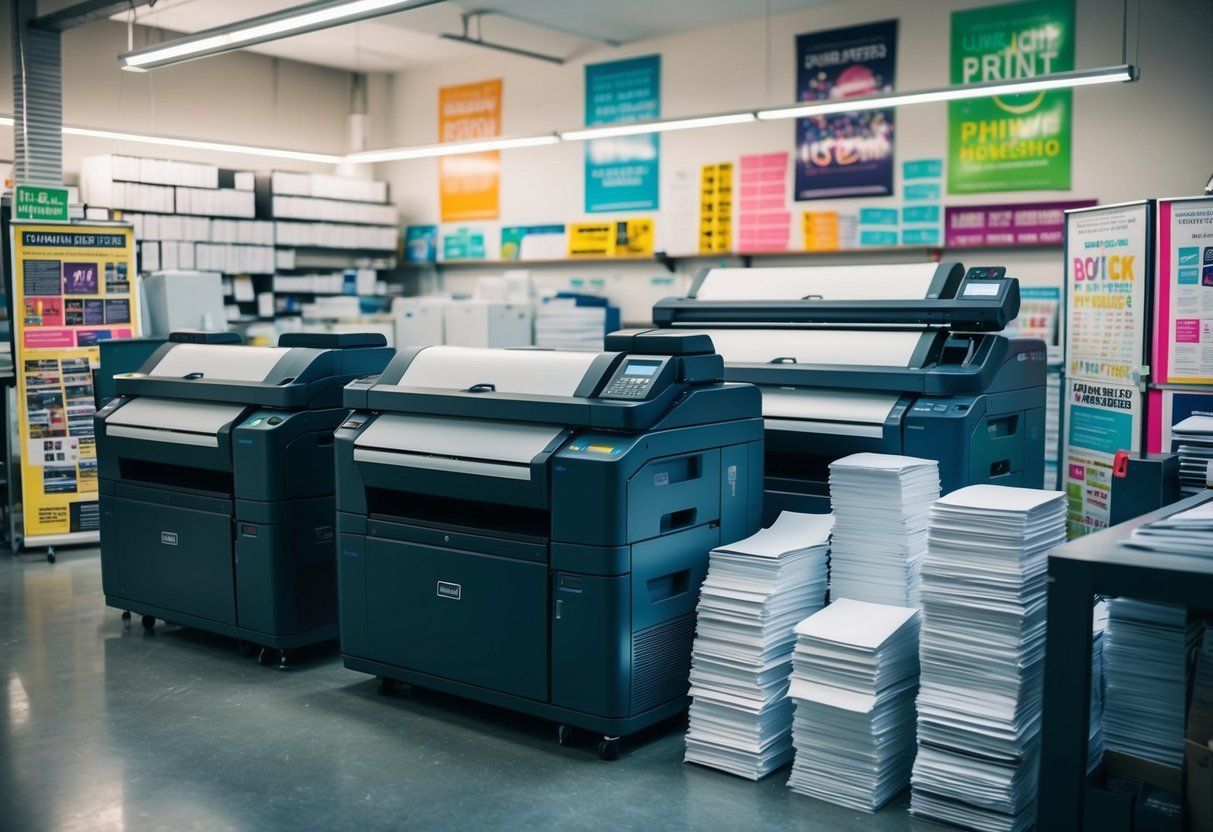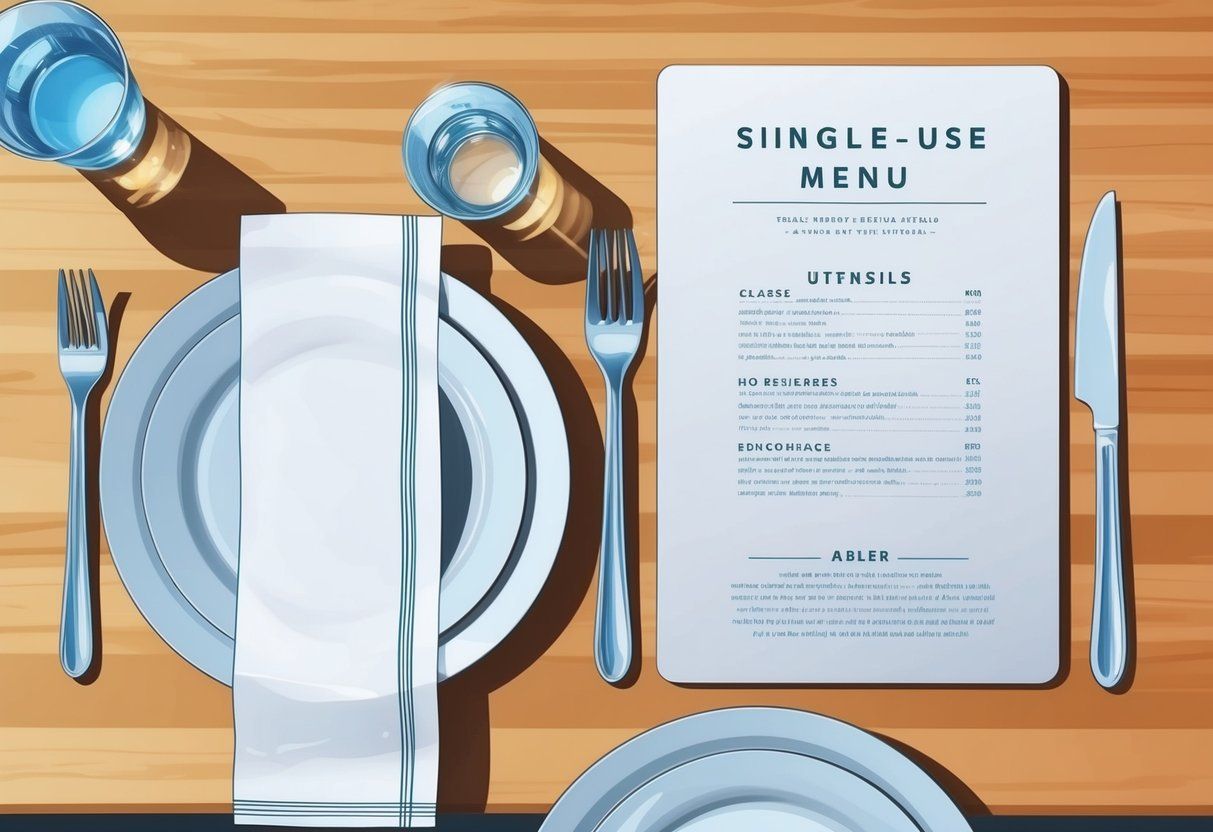The Ultimate Guide to Sticker Types: Vinyl, Paper, Clear & More Compared
Choosing the right sticker material can make a big difference in how well the sticker works and looks. There are many types available, including vinyl, paper, and clear stickers, each with unique features and uses.
Vinyl is known for its durability and water resistance, paper offers affordability and ease of printing, while clear stickers provide a clean, see-through look that blends well with surfaces.
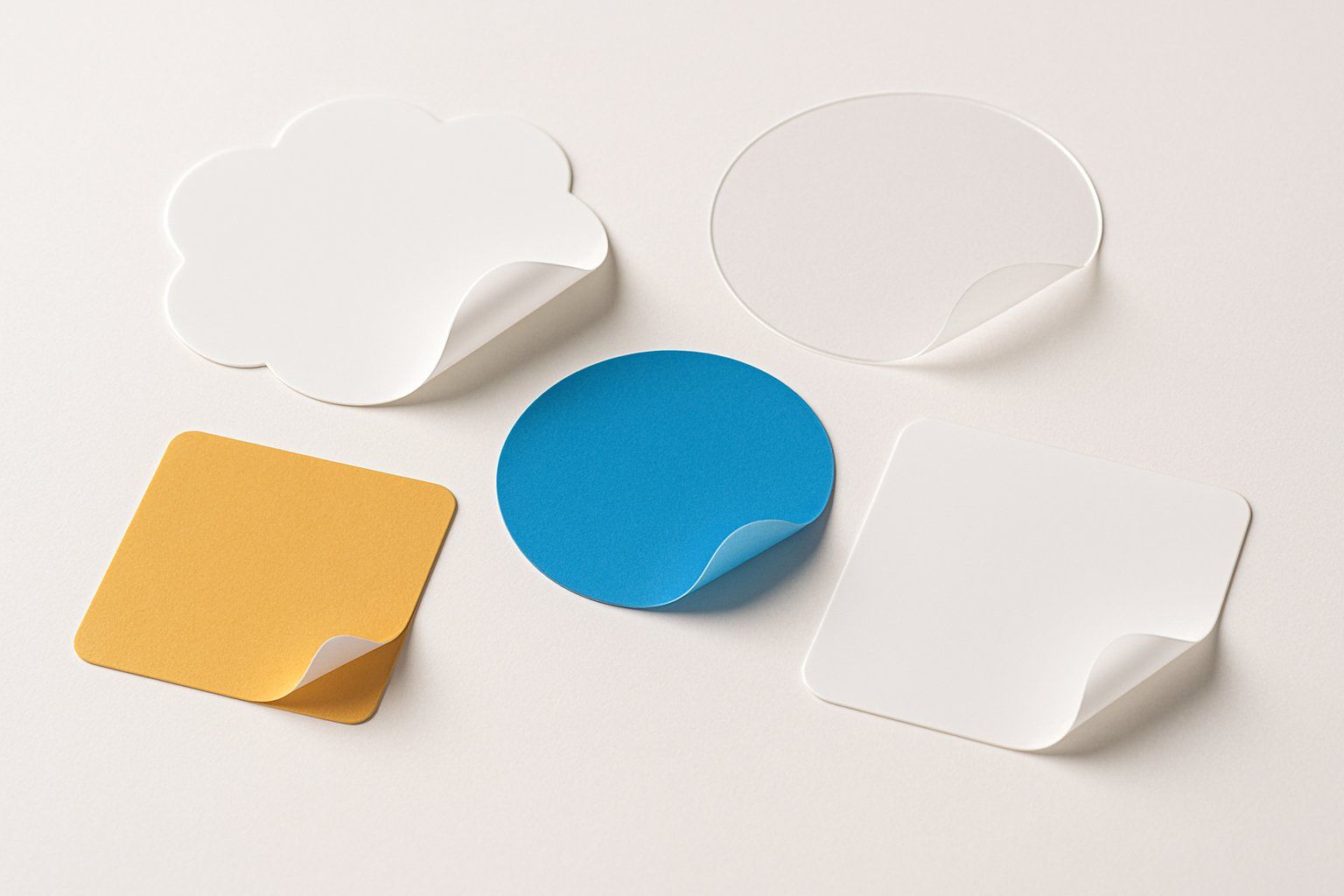
Different projects need different materials based on where and how the sticker will be used. For example, vinyl is great for outdoor use because it can handle weather, while paper stickers work well for short-term or indoor use.
Clear stickers are perfect for a no-label look on products or windows. Knowing the strengths and limits of each type helps in picking the best sticker material for any need.
Key Takeaways
- Durability and appearance vary widely between vinyl, paper, and clear stickers.
- Choosing the right sticker depends on the sticker’s purpose and environment.
- Understanding each material’s strengths helps in making informed printing decisions.
Overview of Sticker Types and Uses
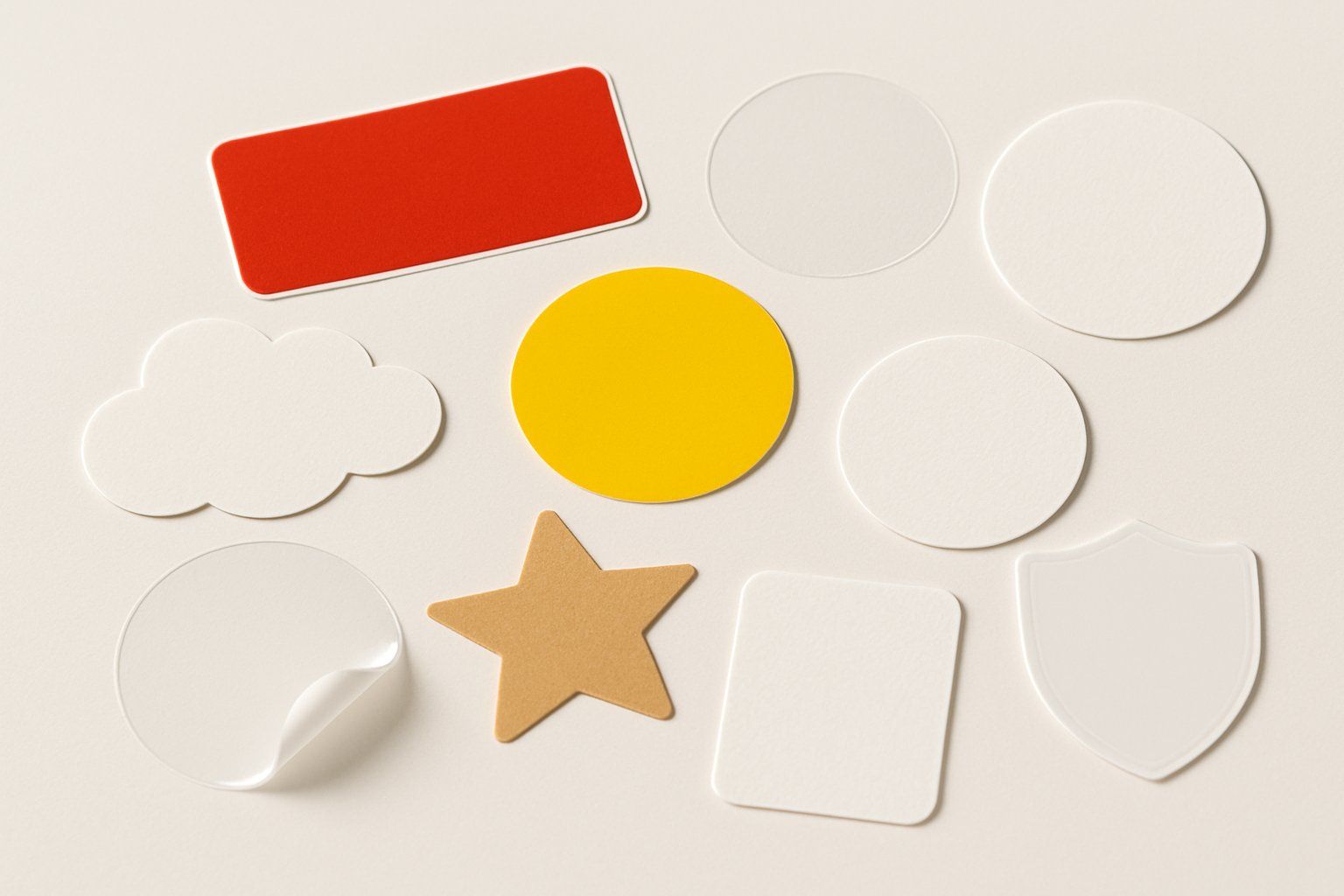
Stickers and decals come in many materials and designs, each suited for specific uses. Their applications range from personal expression to business branding, with options that vary in durability, finish, and adhesion.
Understanding these differences helps in selecting the right type for the needed purpose.
What Are Stickers and Decals
Stickers are adhesive-backed designs printed on various materials like vinyl, paper, or clear film. They are primarily decorative or promotional and can stick to many surfaces such as laptops, cars, and packaging.
Decals are a type of sticker designed for more durable applications. They often require transfer methods for application, leaving only the design on the surface.
Decals withstand outdoor conditions better and are used on vehicles and windows. The key difference lies in durability and application style.
While stickers can be simple and temporary, decals are usually stronger and intended for long-term use.
Custom Stickers for Personal and Business Use
Custom stickers allow users to select their design, size, shape, and material to fit unique needs. For personal use, they offer a creative way to decorate items or express identity.
Businesses use custom stickers to promote brands, create packaging labels, or enhance product appeal. Durable vinyl stickers are favored for outdoor marketing due to weather resistance.
Options like clear or holographic stickers add visual interest, while eco-friendly materials appeal to sustainability-conscious users.
Choosing the right type depends on where and how long the sticker will be used.
Popular Sticker Applications
Stickers are widely used in branding, packaging, product labeling, and event marketing. Vinyl stickers are common for outdoor use because of their ability to endure rain, sunlight, and wear.
Paper stickers work well for indoor applications like product labels or event giveaways where durability is less critical.
Clear stickers suit situations where the design should blend with the surface, such as window displays. Die-cut stickers offer custom shapes, making branding more distinctive.
Holographic and foil stickers add special effects to promotional materials, attracting attention at trade shows or in retail settings.
Vinyl Stickers: Features and Ideal Uses
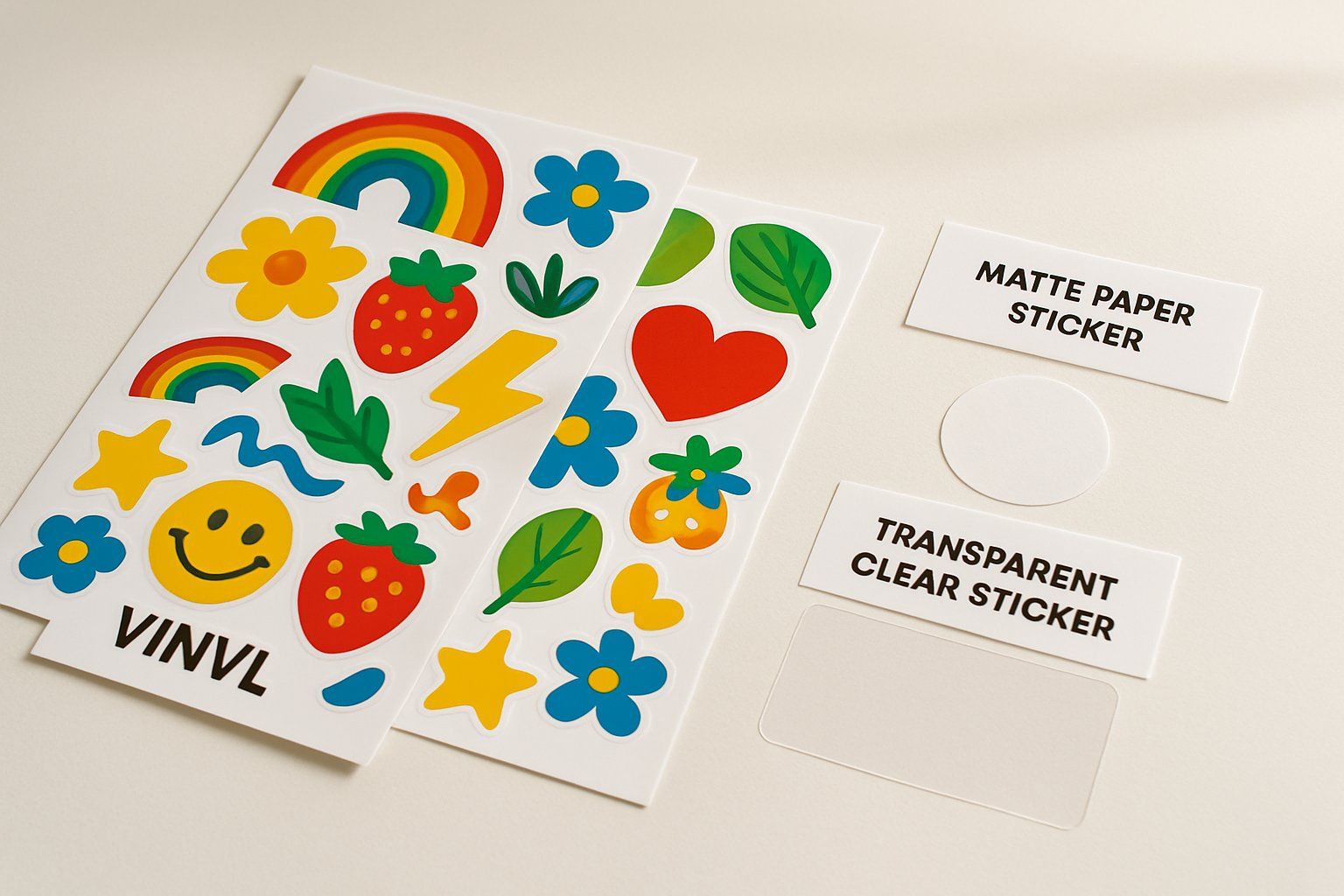
Vinyl stickers are popular for their strength, flexibility, and range of finishes. They come in different types designed for specific surfaces and conditions.
Their ability to resist water, fading, and tearing makes them suitable for many uses.
Types of Vinyl Stickers
There are several types of vinyl stickers, each with unique qualities.
- Glossy Vinyl has a shiny finish that makes colors stand out.
- Matte Vinyl offers a smooth, non-reflective surface ideal for a subtle look.
- Clear Vinyl provides a transparent background that blends well with surfaces.
- Reflective Vinyl is designed to catch light, often used for safety or branding.
Each type can be tailored for indoor or outdoor use, with options for removable or permanent adhesive. Custom shapes and sizes help make vinyl stickers fit specific design needs.
Durability and Weather Resistance
Vinyl stickers are well-known for their durability. They resist water, making them washable and usable in wet conditions.
This material can endure exposure to sunlight without colors fading quickly due to UV protection. They also withstand temperature changes, rain, and wind, which makes them reliable for outdoor use.
Vinyl’s flexibility helps the stickers stick well to uneven surfaces without cracking or peeling. These qualities make them last longer than paper and other sticker materials.
Best Applications for Vinyl Stickers
Vinyl stickers work well in many settings. They are perfect for outdoor branding on vehicles, windows, and signage because they resist fading and weather damage.
Indoors, vinyl stickers can decorate product packaging, laptops, or walls. Clear vinyl stickers especially suit glass surfaces where a subtle look is desired.
Their waterproof feature also makes them ideal for safety labels, bumper stickers, and promotional decals. Businesses and individuals use custom vinyl stickers when they need long-lasting, attractive, and versatile designs.
Paper Stickers: Advantages and Limitations
Paper stickers are a popular choice for many uses because they are affordable and easy to print on. They come in different finishes and types, making them suitable for a variety of projects.
However, they are less durable than vinyl or polyester and are best for short-term applications.
Paper Sticker Types and Finishes
Paper stickers come in various types like glossy , matte , kraft , and writable finishes. Glossy paper stickers have a shiny surface that makes colors look bright and clear.
Matte paper stickers have a flat, non-shiny surface that gives a professional, elegant look. Kraft paper stickers have a natural, textured surface, popular for eco-friendly and handmade product labels.
Writable paper stickers allow users to write on them easily, useful for inventory or shipping labels. All paper types are lightweight and print well but are not waterproof or resistant to tearing.
Appropriate Uses for Paper Stickers
Paper stickers work well for temporary labels, product packaging, crafts, and promotions. They are commonly used in food packaging, arts and crafts, and indoor labeling where durability is not critical.
They suit short-term use because they can tear easily and react poorly to moisture and sunlight. Paper stickers with matte or writable finishes are good for custom notes and pricing tags.
For outdoor or long-lasting needs, vinyl or polyester is preferred.
Clear Stickers: Benefits and Unique Qualities
Clear stickers stand out because of their transparency, allowing designs to blend smoothly with any background. Their materials and durability make them suitable for a wide range of uses, especially where a clean, professional look is needed.
They also offer weather resistance, making them reliable indoors and outdoors.
Clear Sticker Materials
Clear stickers are commonly made from vinyl and biaxially-oriented polypropylene (BOPP) . Vinyl is flexible and durable, resistant to water, UV rays, and scratches.
This makes it a good choice for both indoor and outdoor use. BOPP is lighter and often used for food packaging and labeling because it maintains clarity and resists moisture.
Some clear stickers come with front-adhesive or back-adhesive options. Front-adhesive stickers show the design facing away from the surface, which is common for windows.
Back-adhesive stickers face the surface directly and are often used inside glass for protection.
Ideal Uses for Transparency
Clear stickers work best on glass, plastic, metal, or any smooth surface where the goal is a subtle appearance. They are perfect for:
- Window decals
- Bottle labels
- Product packaging
- Laptop and phone skins
The transparency makes backgrounds visible without blocking the design. This helps designs look integrated rather than pasted on.
Because of their durability and weather resistance, clear stickers are popular in outdoor settings where exposure to sunlight and rain occurs.
Comparing Clear to Other Materials
Clear stickers differ from white or paper stickers by showing the surface beneath. White stickers offer full color opacity but stand out more on surfaces, which may not suit all designs.
Paper stickers lack moisture resistance and can wear down quickly, so they are better suited for short-term use or indoor settings.
Clear vinyl is more durable and weather-resistant than paper and non-vinyl types. It maintains its look over time, making it a better option for branding that needs longevity.
Comparing Sticker Materials: Vinyl, Paper, Clear, and More
Sticker materials vary widely in how they perform, cost, and print quality. Some hold up better outdoors, while others offer sharper images or lower prices.
Knowing these differences helps in choosing the right sticker for each use.
Material Performance Under Different Conditions
Vinyl stickers are the most durable and weather-resistant. They handle water, sunlight, and temperature changes well.
This makes vinyl ideal for outdoor use on cars, windows, or signs. They also resist tearing and can be cleaned without damage.
Paper stickers are less durable and meant mostly for indoor use. They fade faster in sunlight and don’t hold up to moisture.
Paper options tear more easily and are not washable. However, they biodegrade quickly and work well for short-term or budget projects.
Clear stickers, often made from vinyl or polyester, combine durability and a see-through look. They resist weather like regular vinyl but are chosen for their subtle style on glass or plastic surfaces.
Their adhesive and flexibility make them good for curved or smooth areas.
Cost and Print Quality Differences
Paper stickers are cheapest and simple to print. They work on most printers and suit basic designs.
Print colors on paper tend to be less vibrant and more matte. Vinyl stickers cost more but offer better print quality.
Their surface holds sharper colors and brighter finishes, both glossy and matte. This makes vinyl preferred for detailed designs needing eye-catching effects.
Clear stickers, while pricier than paper, provide a unique translucent effect. Print quality varies but generally sits between vinyl and paper.
They often require special printing methods, which raises cost. Choosing between cost and look depends on how long the sticker must last and where it will be used.
Vinyl is the best balance for durability and print, while paper saves money on short-term projects.
Selecting the Right Material for Your Needs
Choosing the best sticker material depends on several key points, including how the sticker will be used and the technical details of printing. Factors like durability, surface type, and budget play important roles.
The printing process also affects the final look and quality of the sticker.
Factors Influencing Sticker Material Choice
The main factor is where the sticker will be applied. For outdoor use, vinyl and polyester offer strong weather resistance and durability.
They handle sunlight, rain, and rough surfaces well. Indoor stickers can use paper or clear materials, which focus more on appearance than toughness.
Sticker flexibility is important for curved or uneven surfaces. Vinyl adapts well to these shapes, while paper or polyester may crack.
Cost also matters. Paper stickers are cheaper and eco-friendly but less durable. Vinyl is mid-range in price and offers good longevity.
Polyester tends to be the most expensive but lasts the longest. Design complexity can affect the choice.
For bright colors and sharp images, vinyl usually works better. Paper can look matte and softer but may fade faster.
Clear stickers let the background show through, which works well for window decals or layered designs.
Printer Compatibility and Settings
Not all printers work well with every sticker material. For example, inkjet printers handle paper and some vinyl sheets but may struggle with polyester’s thickness.
Laser printers generally produce sharper images but require materials that can withstand heat. Print settings must match the sticker type.
Adjusting resolution, ink density, and color profiles helps get clear, vibrant prints. Materials like vinyl benefit from waterproof ink and UV coating to prevent fading.
Design files should also be optimized. High-contrast images and simple shapes print better on durable materials.
Complex gradients or fine details might lose clarity on polyester or clear stickers due to texture or transparency.
Testing small samples with your printer and software settings ensures the sticker looks right. This avoids wasting materials and time on unsuitable choices.
Understanding Adhesives and Release Liners
Adhesives and release liners play key roles in sticker performance. The right adhesive ensures the sticker sticks well to the intended surface.
Release liners protect the adhesive until use. They make the sticker easy to remove from its backing.
Types of Sticker Adhesives
Sticker adhesives fall into a few main categories based on their properties:
- Permanent adhesives : These form a strong bond and are hard to remove without damage. Used for long-lasting stickers on cars, electronics, and product labels.
- Removable adhesives : Designed to peel off cleanly without leaving residue. Ideal for temporary labels, wall decals, and promotional stickers.
- Repositionable adhesives : Allow the sticker to be moved and stuck again multiple times. Used for notes and repositionable labels.
- High-tack adhesives : Provide extra stickiness for rough or uneven surfaces like concrete or fabric.
Adhesives may be water-based, solvent-based, or acrylic. Each type affects durability and environmental resistance.
Choosing the Correct Release Liner
The release liner protects the adhesive and helps with smooth application. It is usually coated with silicone or similar materials that stop the adhesive from sticking permanently to the liner.
Common types of release liners include:
| Type | Description | Typical Use |
|---|---|---|
| Glassine paper | Smooth, translucent, grease-resistant | High-end or detailed stickers |
| Poly-coated kraft paper | Strong, moisture-resistant | Industrial, outdoor stickers |
| PET film liners | Plastic-based, durable, clear | Transparent or heavy-duty stickers |
Choosing the right release liner depends on sticker material, environmental exposure, and printing method. Proper storage and handling of release liners are important to avoid contamination and maintain adhesive strength.
Frequently Asked Questions
Stickers come in many materials, each with unique properties that affect their look, durability, and use.
What are the key differences between various sticker materials?
Sticker materials include vinyl, paper, clear, and foil. Vinyl is durable and water-resistant.
Paper stickers are cheaper but less durable. Clear stickers are see-through and blend well on surfaces.
Foil stickers shine and add a metallic effect but may be less flexible.
How do I choose the right sticker type for my product packaging?
The choice depends on the product’s environment and design needs. Vinyl is good for products exposed to moisture.
Paper works well for short-term use or eco-friendly packaging. Clear stickers are ideal when you want the packaging color or texture to show through.
What are the advantages of using vinyl stickers over paper stickers?
Vinyl stickers last longer and resist water, sunlight, and wear better than paper stickers. They are flexible, hold color well, and stick firmly to various surfaces.
Paper stickers are less durable and can tear or fade faster.
Is there a type of sticker material that is considered waterproof?
Yes, vinyl stickers are generally waterproof. They handle moisture without damage.
Some other materials may have water resistance if laminated, but vinyl is the most reliable for waterproof needs.
How do clear stickers compare to regular printed stickers?
Clear stickers have a transparent background, making them blend smoothly into the surface. Regular printed stickers have a white or colored backing that stands out more.
Clear stickers work well for subtle branding. Printed stickers are more visible.
For outdoor applications, which sticker type offers the best durability?
Vinyl stickers are the best choice for outdoor use. They resist fading, water, and harsh weather.
Paper stickers are not suitable for outdoor conditions because they degrade quickly.
Lamination can improve durability but is not a substitute for vinyl’s strength.…
